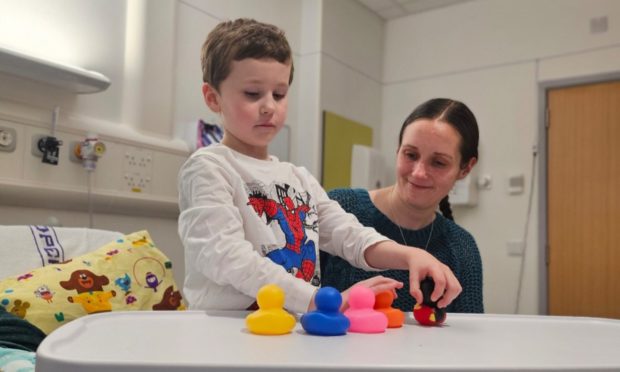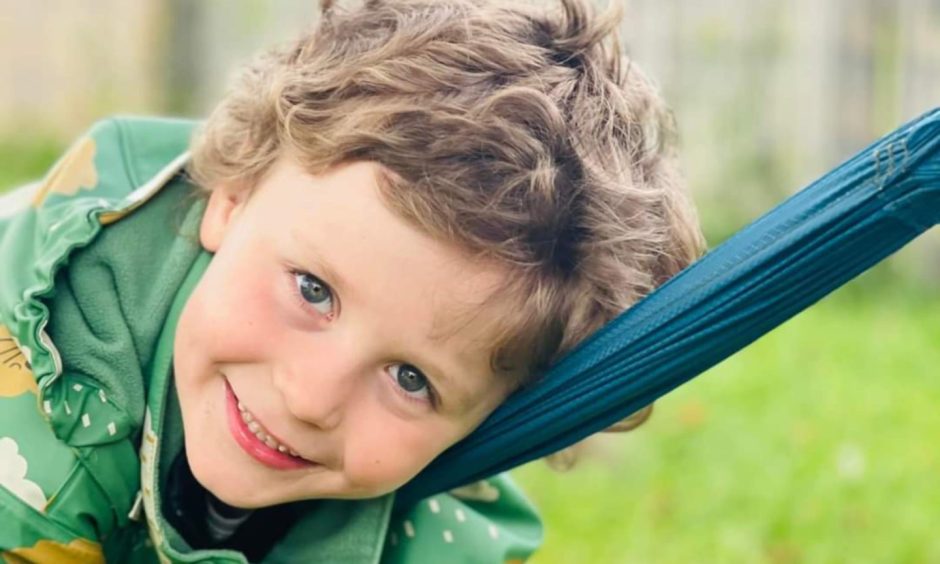
Scotland’s Children’s Commissioner Nicola Killean has criticised government ministers for failing to protect young people with special needs.
Her intervention comes after the Sunday Post last week revealed the shocking treatment of school pupil Isaac Tocher.
We told how Isaac, seven, who has a developmental age of just one year, was watched from behind a closed door by staff at Cairneyhill Primary School, Dunfermline, as the distressed child hit his head off a wall.
But they only told his mum that Isaac was “upset”.
Killean said: “All children have the right to protection from all forms of abuse or harm, in all aspects of their lives. Children have the right to feel safe.
“They have a right to dignity, to bodily integrity and to be protected from cruel, inhuman or degrading treatment. The state has additional human rights obligations to ensure disabled children receive special care and assistance.
“My office, alongside families, campaigners and charities, has demanded for years that the Scottish Government introduces legal protection for children on the use of physical restraint and seclusion in all situations where children are in the care of the state, including schools, mental health provision and secure accommodation, along with mandatory recording and reporting of all incidents.”
🎥 No child should experience what Isaac Tocher had to endure. His distress and injury were the result of a shocking lack of support and resources. Today, I pressed the First Minister to commit to real change, ensuring all Scottish schools have the training and resources to… pic.twitter.com/UDfVLgIh2f
— Roz McCall MSP (@RozMccall) November 7, 2024
MSPs from all parties are being urged to support a new Bill being brought by Labour’s Daniel Johnson to bring in sweeping new statutory changes that will better protect special needs children.
Calum’s Law – named after campaigner Beth Morrison’s autistic son, who suffered injuries and abuse after being restrained and secluded at school – will ensure protection is in place.
There is no requirement currently to report or monitor restraint or placing children in seclusion. The Children’s Commissioner carried out an investigation six years ago and found disabled children were disproportionately subjected to restraint and seclusion.
Killean said: “Yet children are still waiting for statutory protection. We strongly support the Bill, introduced by Daniel Johnson MSP, that is currently being considered by the Scottish Parliament. But the government should have acted long ago.
“Any use of physical restraint is traumatic and creates a risk of harm for the child and the staff member involved.”
Isaac Tocher’s mother, Vicki, said she had been contacted by a number of other parents concerned about Cairneyhill School following our expose last week. She said: “I’m deeply concerned by what other parents have told me. I’m relieved I chose to speak out for children like Isaac everywhere in Scotland. Things have to change.”
Another mum, Chelsea Clark, from Montrose, removed her nine-year-old autistic son, Kylan, from Lochside Primary School in June after she heard a teacher allegedly screaming at him: “I’m sick of you!” Now she has discovered that her little boy was being taught in a “filthy cupboard with a desk turned to the wall”.
The mum visited Lochside with Morrison last month and demanded to see where her son was being put into seclusion away from his classmates.
She said: “At first, we were told to come back to the school another day, but we insisted. I told the head teacher that we wanted to see the room where Kylan had repeatedly been put for hours on end. We were taken to a filthy, tiny cupboard which had my son’s picture on the door declaring it to be “Kylan’s Room”.
“There was a desk facing a wall, and that was it. There was no way Kylan would have been able to get out of that cupboard because the handle on the inside had been removed. I fled in tears when I saw what my son had endured at that school. What he was subjected to has affected Kylan deeply. After going to Lochside, he changed from being a happy wee boy to a child who goes straight to his room and closes the door. That school trained him to believe he must be locked away from everyone. It’s heartbreaking.”
Chelsea is refusing to send her son back to school as she says she “no longer trusts them” with his safety.
Morrison said: “I’ve seen and heard some dreadful things while campaigning for change but seeing that awful cupboard with a desk facing the wall made me sick to my stomach. This is not what our children deserve. Parents have little idea what these very vulnerable children are being exposed to because they are not automatically shown unless they demand to see for themselves.”
Labour MSP Johnson said: “The Children’s Commissioner’s warning that the Scottish Government is failing to uphold the human rights of our most vulnerable children makes for sobering reading. We all share the Scottish Government’s vision to make Scotland the best place in the world for children and young people to grow up but, sadly, for too many children with additional special needs, that vision is a long way from reality.”
Angus Council said: “The seclusion of children and young people is not used in Angus schools. We are committed to ensuring that all of our children and young people are supported in safe and respectful environments.”
The Scottish Government said: “Restraint and seclusion in schools must only ever be used as a last resort to prevent the risk of injury and this new guidance on physical intervention reaffirms this position. The Scottish Government is currently exploring options for strengthening the legal framework in this area.”

Enjoy the convenience of having The Sunday Post delivered as a digital ePaper straight to your smartphone, tablet or computer.
Subscribe for only £5.49 a month and enjoy all the benefits of the printed paper as a digital replica.
Subscribe © Supplied
© Supplied